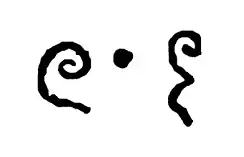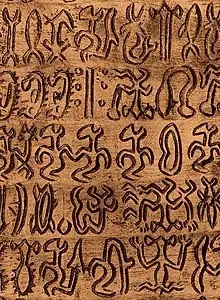- For a topical guide of this subject, see Outline of linguistics
Welcome to the Linguistics Portal!Linguistics is the scientific study of language. Linguistics is based on theoretical as well as descriptive study of language and is also interlinked with the applied fields of language studies and language learning, which entails the study of specific languages. Before the 20th century, linguistics evolved in conjunction with literary study and did not exclusively employ scientific methods. Traditional areas of linguistic analysis correspond to syntax (rules governing the structure of sentences), semantics (meaning), morphology (structure of words), phonetics (speech sounds and equivalent gestures in sign languages), phonology (the abstract sound system of a particular language), and pragmatics (how social context contributes to meaning). Subdisciplines such as biolinguistics (the study of the biological variables and evolution of language) and psycholinguistics (the study of psychological factors in human language) bridge many of these divisions. Linguistics encompasses many branches and subfields that span both theoretical and practical applications. Theoretical linguistics (including traditional descriptive linguistics) is concerned with understanding the universal and fundamental nature of language and developing a general theoretical framework for describing it. Applied linguistics seeks to utilise the scientific findings of the study of language for practical purposes, such as developing methods of improving language education and literacy. (Full article...) Selected article -
Rongorongo is a system of glyphs discovered in the 19th century on Easter Island that appears to be writing or proto-writing. It has not been deciphered despite numerous attempts. Although some calendrical and what might prove to be genealogical information has been identified, not even these glyphs can be read. If rongorongo does prove to be writing, it would be one of only three or four known independent inventions of writing in human history. Two dozen wooden objects bearing rongorongo inscriptions, some heavily weathered, burned, or otherwise damaged, were collected in the late 19th century and are now scattered in museums and private collections. The objects are mostly tablets made from irregular pieces of wood, sometimes driftwood, but include a chieftain's staff, a bird-man statuette, and two reimiro ornaments. Oral history suggests that only a small elite was ever literate and that the tablets were sacred. Authentic rongorongo texts are written in alternating directions, a system called reverse boustrophedon. In the case of the tablets these lines are often inscribed in shallow fluting carved into the wood. The glyphs have a characteristic outline appearance and include human, animal, plant, artifact and geometric forms. (more...) Did you know...From Wikipedia's "Did You Know" archives:  The number 605 in Khmer Numerals
Related PortalsThings you can do
CategoriesCategory puzzle Select [►] to view subcategories
Linguistics Linguistics lists Branches of linguistics Linguists Language classification Conditionals in linguistics Constructed languages Linguistic controversies Linguistics databases Discourse analysis Linguistic error Linguistics events Linguistic example sentences Formal languages Grammar History of linguistics Language contact Language documentation Language games Language preservation Languages Anthropological linguistics Linguistic modality Onomastics Linguistics organizations Orthography Philosophy of linguistics Linguistics projects Pseudolinguistics Linguistic research Linguistics terminology Time in linguistics Linguistic units Linguistics works Linguistics writers Linguistics stubs WikiProjectsThe following WikiProjects work to improve topics concerned with linguistics:
Associated WikimediaThe following Wikimedia Foundation sister projects provide more on this subject:
Discover Wikipedia using portals
|






